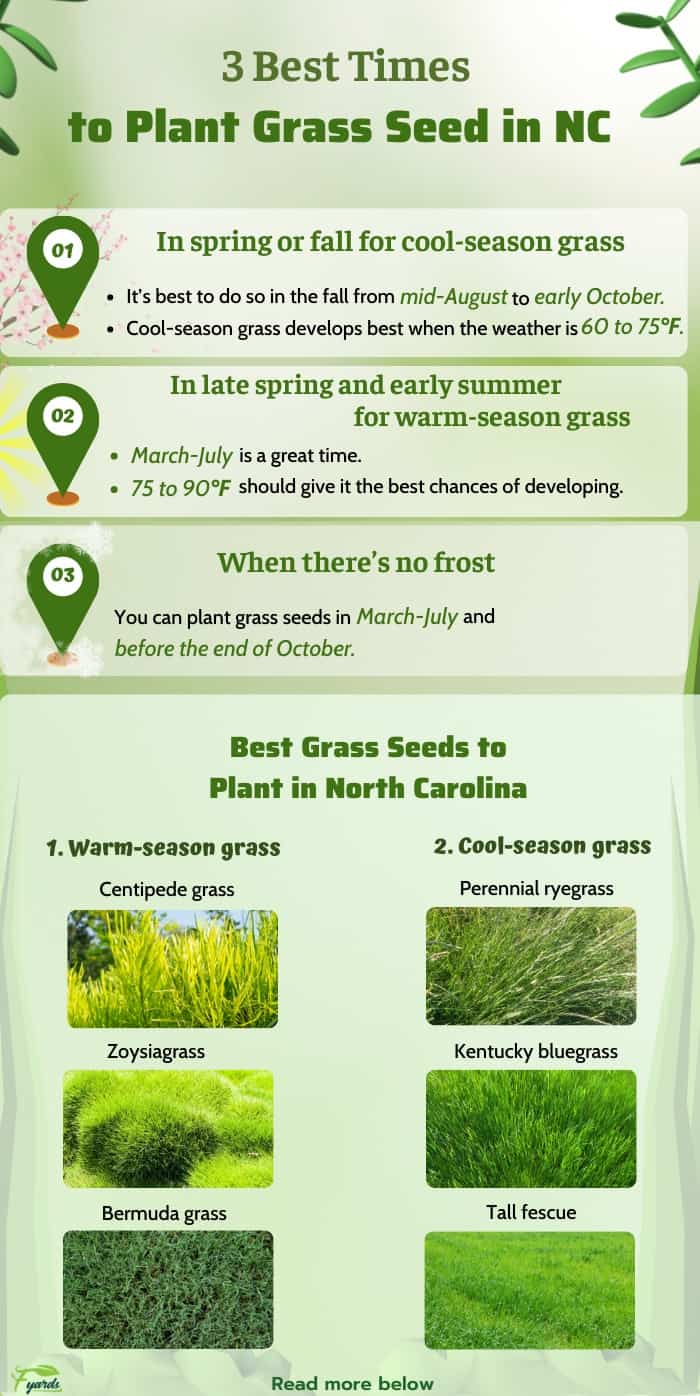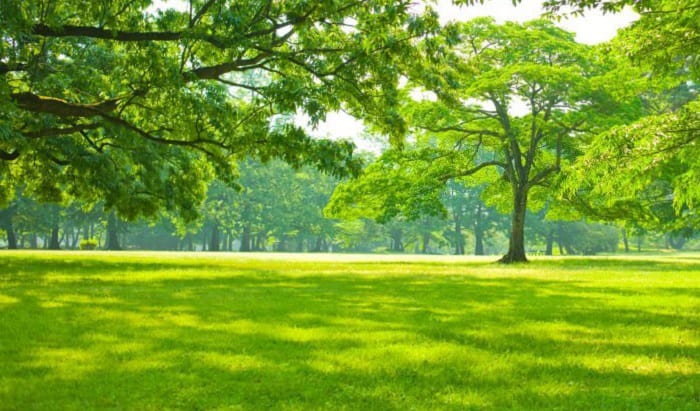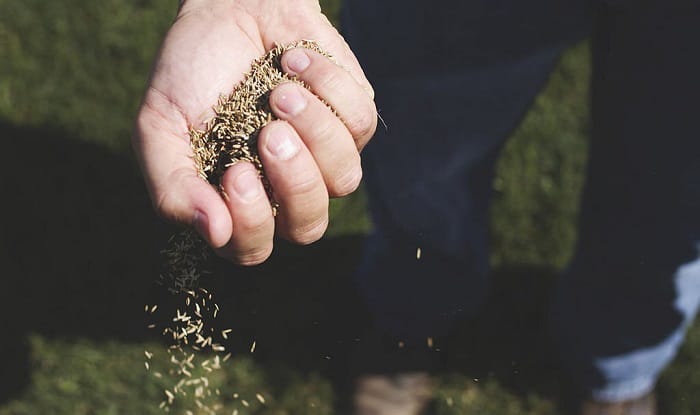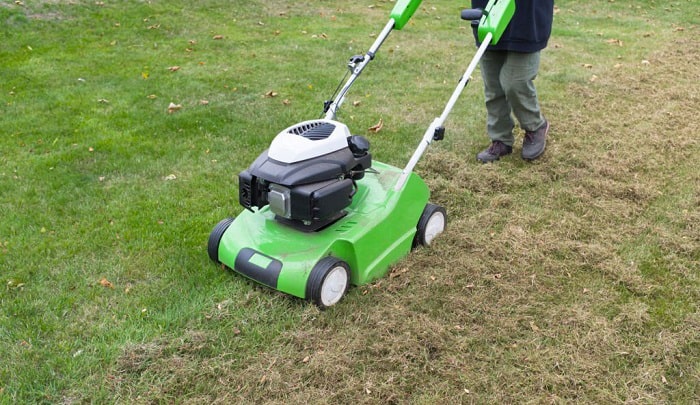Grass can reduce the erosion of the soil. Not only that, it releases oxygen into the air and sucks up carbon dioxide, reducing environmental pollution in the process. For these reasons, having a grass lawn is desirable to many gardeners.
If you live in the Tarheel state, you may wonder when to plant grass seed in North Carolina.
In general, warm-season grass should be grown during late spring and early summer, while cool-season varieties will thrive in early fall (with early spring being slightly less optimal). Read on for more info.
Table of Contents
Best Time to Plant Grass Seed in NC
1. In spring or fall for cool-season grass
If you want to grow cool-season grass, it’s best to do so in the fall from mid-August to early October. Although spring is also possible, it is not ideal. The reasons are:
- Cool-season grass develops best when the weather is 60 to 75℉. Because autumn is moderate in terms of temperature, it’s a better time for gardening than summer and winter.
- Spring is another period for growing cool-season grass, but the looming heat of summer is a concern, especially if seeds aren’t sown early enough to retain moisture better.
2. In late spring and early summer for warm-season grass
When planting grass seed in NC (warm-season varieties, to be particular), March to July is a great time. Within these months, you’ll have time to establish a turf before the cold of winter comes.
As you can probably tell from the name of this grass type, high temperatures are paramount. Specifically, 75 to 90℉ should give it the best chances of developing.
3. When there’s no frost
Another thing to keep in mind when growing grass in NC is the frost date.
- If you start sowing grass seeds when frost is still around, they won’t germinate and may even die.
- In another scenario, even if sprouting happens, the plants may be thin and unevenly distributed, leaving you with a lifeless lawn instead of the lush field you imagined.
- To make matters worse, there’s a chance weeds may compete with your grass and prevent it from accessing soil nutrients.
With these facts in mind, take note of the frost dates for your locality.
For instance, because Piedmont, North Carolina’s last frost is April 8 while its first frost is October 30, residents here can plant grass seeds in mid-April and before the end of October.
When is It Too Late to Plant Grass Seeds in North Carolina?
Aside from noting down the seasons mentioned above, you can decide when to seed lawn in NC or not by measuring the soil temperature and checking weather forecasts.
If the air’s consistently 40℉ or below, it’s too late in autumn for growing cool-season grass. On the other hand, warm-season turf will have to wait until another time if the weather’s 95°F or higher.
Best Grass Seeds to Plant in North Carolina
Both cool and warm-season grass can grow in North Carolina. Below are some varieties that adapt well to the state.
1. Warm-season grass
- Centipede grass
Centipede grass grows best when the soil is acidic. It is suitable for North Carolina’s piedmont and coastal plain regions and does not require much fertilizer.
- Zoysiagrass
If you like dense grass that withstands foot traffic well, this variety is worth considering. Not only is zoysia drought-resistant, it also withstands weeds and tolerates light shade.
- Bermuda grass
If you plant bermuda grass seed in NC, you won’t have to worry about your turf expanding too slowly. On the downside, more effort will be necessary to keep this grass away from your flower beds.
2. Cool-season grass
- Perennial ryegrass
Ideal for the mountainous regions of North Carolina, perennial ryegrass can prevent soil erosion. If it’s grown alongside Kentucky bluegrass, the optimum planting period is August 15 to September 1.
- Kentucky bluegrass
This type is very pleasant to sit on, a plus if you often have picnics in your garden. Despite being a cool-season variety, Kentucky bluegrass is surprisingly resistant to heat and drought, especially when seeded at a ratio of 1 to 2 pounds per 1,000 square feet.
In the piedmont, Kentucky bluegrass can be grown with tall fescue grass.
- Tall fescue
Tall fescue best suits North Carolina’s mountains and piedmont and requires minimum care. It can tolerate drought well, though watering is necessary if dry weather extends for more than three weeks.
When to Aerate a Lawn in NC?
This depends on the grass variety you’re growing. If it’s a cool-season one, early fall is the aeration time. Meanwhile, for lawns that will hold warm-season grass seeds, early spring is a good time.
In other words, do the aerating at the start of your gardening period.
Conclusion
Knowing when to plant grass seed in North Carolina will help beautify your landscape. After all, a lush, green yard is a sight to behold. Moreover, Are you looking for plants that are suitable for North Carolina weather? Here are some vegetables and the best time to plant them, click to learn more:
What’s more, lawns can reduce noise pollution, a welcoming benefit for homeowners who want some quiet away from the bustle of everyday life.
With the information here, we hope you can create your own grass field in a timely manner. Thanks for reading!

Hi, I am William – Floridayards’ digital content creator. My job is to find answers to all your concerns with thorough research and our team’s expert advice. I will also bring you honest reviews on the best products and equipment for raising your beautiful garden. Please look forward to our work!
















